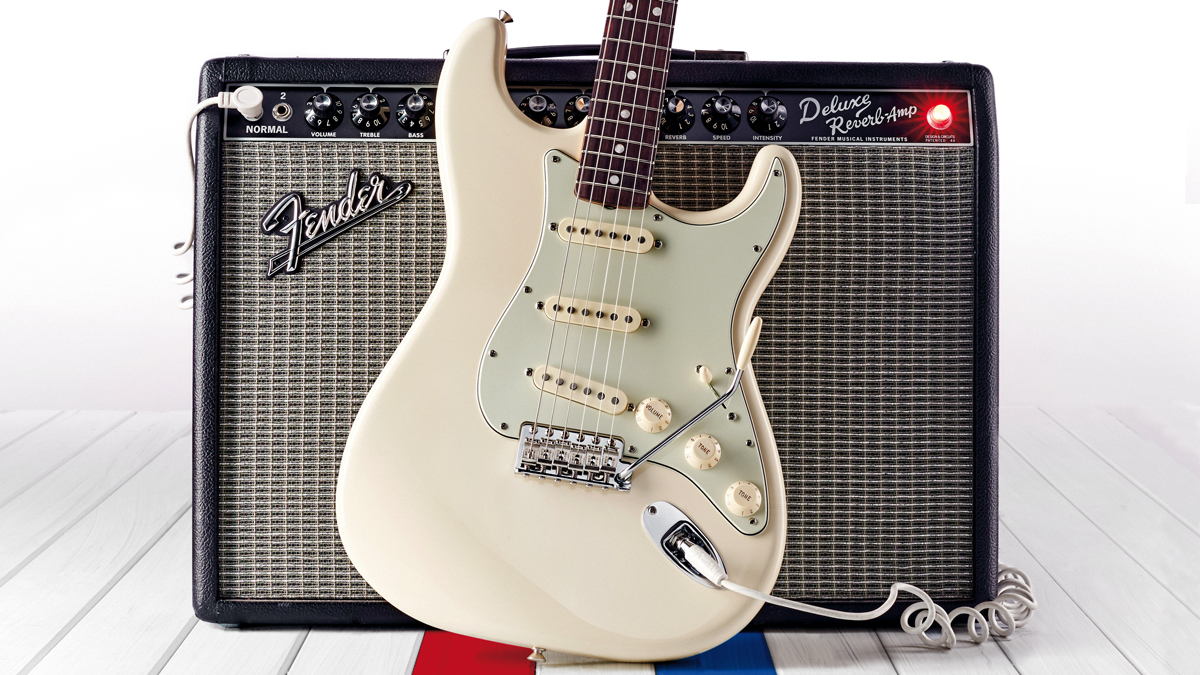Historic hardware: Fender's blonde electric guitars
Fender’s now-iconic blonde finish has been through many evolutions
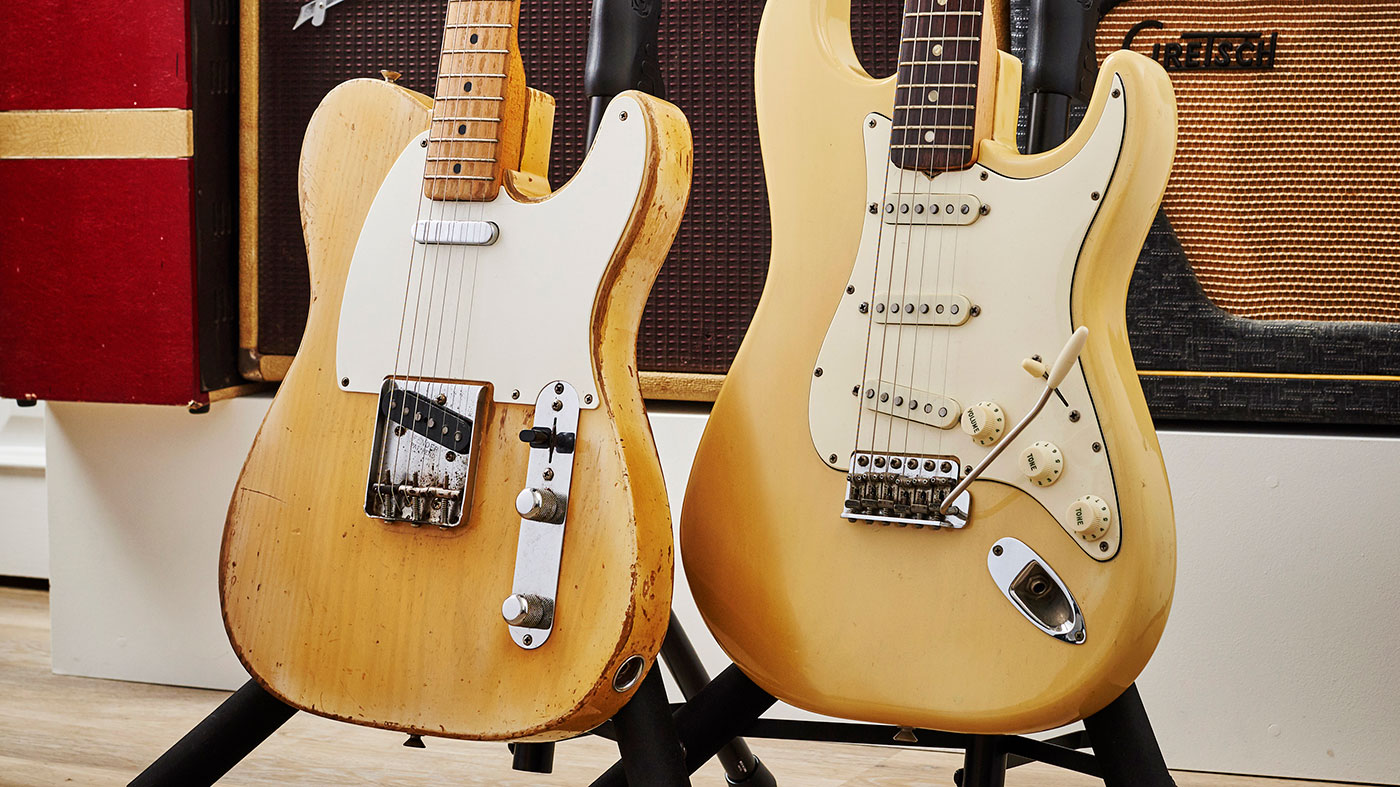
When Fender launched the first ever mass-produced electric solidbody guitars in 1950 - the blonde Esquire and Broadcaster - the instruments became the de facto leaders of a brand-new niche in the music industry, as well as progressing the art of guitar-building as a large-scale industrial process.
Company founder Leo Fender’s aim was to economically and consistently manufacture a hard-wearing product that improved performance in areas such as feedback, intonation and action and was also relatively easy to maintain and repair.
It can be difficult to trace how, exactly, things used to be done at Fender. As a result, a mythology has arisen within guitar culture
Because the company’s manufacturing practices have evolved over time, it can be difficult to trace how, exactly, things used to be done at Fender. As a result, a mythology has arisen within guitar culture concerning the intricacies of how these old instruments were put together - from the obscure origin of ‘clay’ fretboard dots to the dark art of guitar finishing. But careful research into golden-era guitars yields up insights that reveal a clearer picture of Leo’s methods. It’s worth remembering that good, oldfashioned simplicity was key to Fender’s initial success during the 50s and early 60s.
Under Leo’s watchful eye and driven by his engineer’s instinct, the company’s guitarbuilding techniques were being constantly refined and streamlined as a means to enhance quality as well as profit.
“Leo never changed anything unless he felt like it made it better,” begins Mike Lewis, Vice President of Product Development at Fender’s Custom Shop, with reference to pre-CBS design alterations such as multiple-ply pickguards, extra screws and rosewood fingerboards. He continues: “Making it better included lasting longer. It was change for improvement only and part of that improvement was to make it remain in service for longer periods of time and require less repair - just happier customers!”
Despite big advances in massmanufacturing tech since Leo’s heyday, guitar builders at Fender and elsewhere have been revisiting old techniques and designs in order to recreate some of that vintage magic. “Each guitar is a journey,” Mike reminds us. And in the case of blonde Fender guitars, it’s a pilgrimage that stretches way back into the company’s past, to a time when people were only just beginning to take note of solidbodies (and were still referring to guitars equipped with pickups as ‘electric Spanish’ instruments).
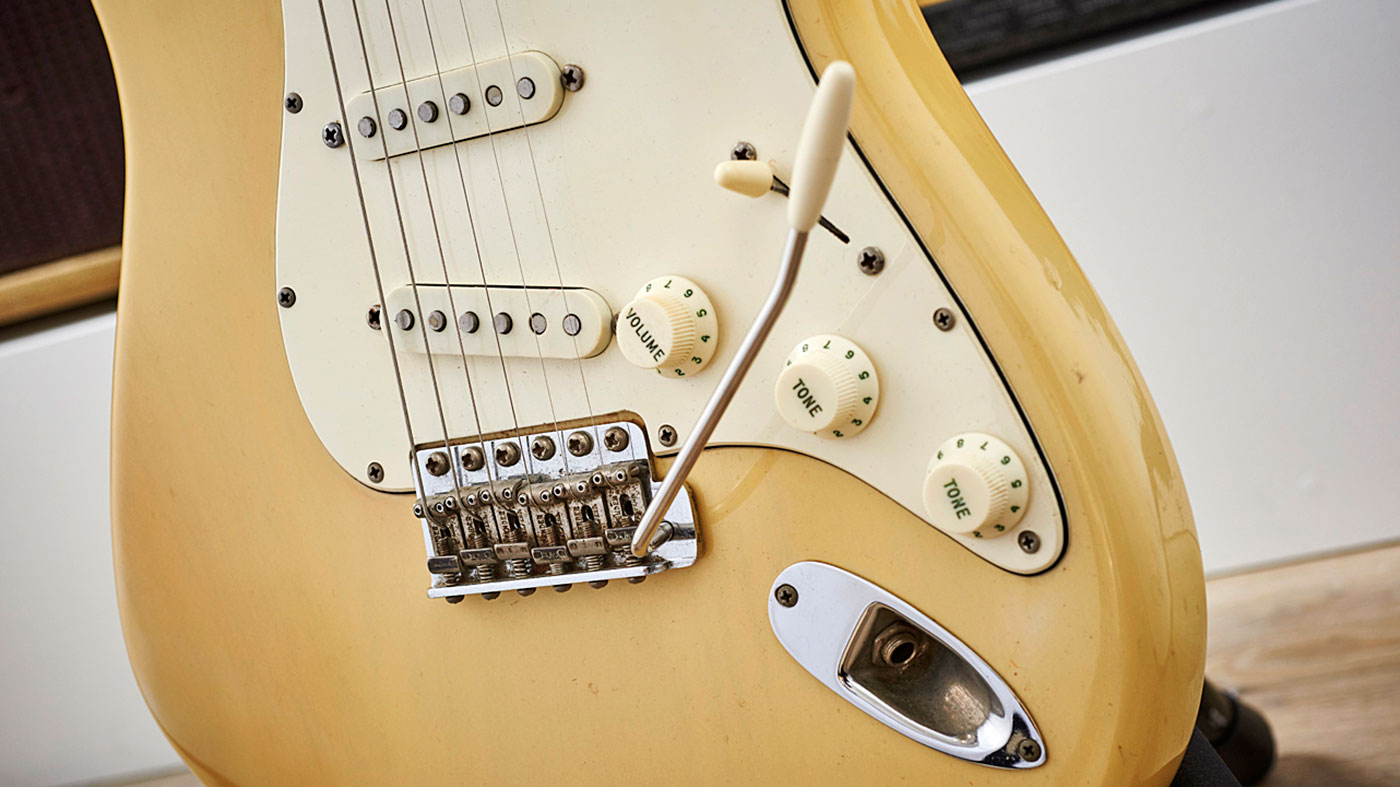
Tele’s Heroes
As the post-war economic boom was happening, and as television became an ever more dominant part of popular culture, Leo Fender embraced the medium by rebranding his new invention the Telecaster in 1951. Its light-coloured finish positively glowed from the screen.
Get the MusicRadar Newsletter
Want all the hottest music and gear news, reviews, deals, features and more, direct to your inbox? Sign up here.
Once TV started happening you started seeing a lot of blonde guitars
“The blackguard Tele showed up perfectly on black and white TV,” Mike says. “It’s hard to know if that’s why they did it - if they had that kind of forethought,” he muses, “but, nevertheless, it turned out it looked really great. When you watch some of those old shows, if you see guys with sunburst or black guitars, or any other colour, it just kind of looks like a ‘thing’, but the blonde, blackguard Teles always popped out. I don’t know if it was intentional or accidental, but it seemed like everybody picked up on it, and once TV started happening you started seeing a lot of blonde guitars.”
By virtue of its name, aesthetics and sound, the blonde Telecaster seemed to embody the post-war era perfectly. Along with television, white goods, colourful cars and a generally brighter outlook on life, light-coloured furniture was all the rage. Therefore, Leo’s choice of blonde finish was fortuitous in terms of the Telecaster’s ability to hog the televisual limelight - which was not lost on Gibson, who later released the similarly hued ‘limed mahogany’ black ’guard Les Paul TV in 1954. As Mike points out: “When the [blonde] blackguard Tele first came out, nobody else was doing solidbodies.”
Although the occasional black Esquire appeared early on, Fender decided to persevere with their choice of blonde finishes from the start and readily experimented with various materials and techniques to get the winning formula. “There was a hand-applied blonde very early on, before they developed the spray technique,” Principal Master Builder at the Fender Custom Shop, Ron Thorn, tells us. “They used a hand-applied stain, versus a spray stain and were using a few different brands, including McFadden and Sherwin- Williams. There were at least four different brands of lacquer, stain and sealers.”
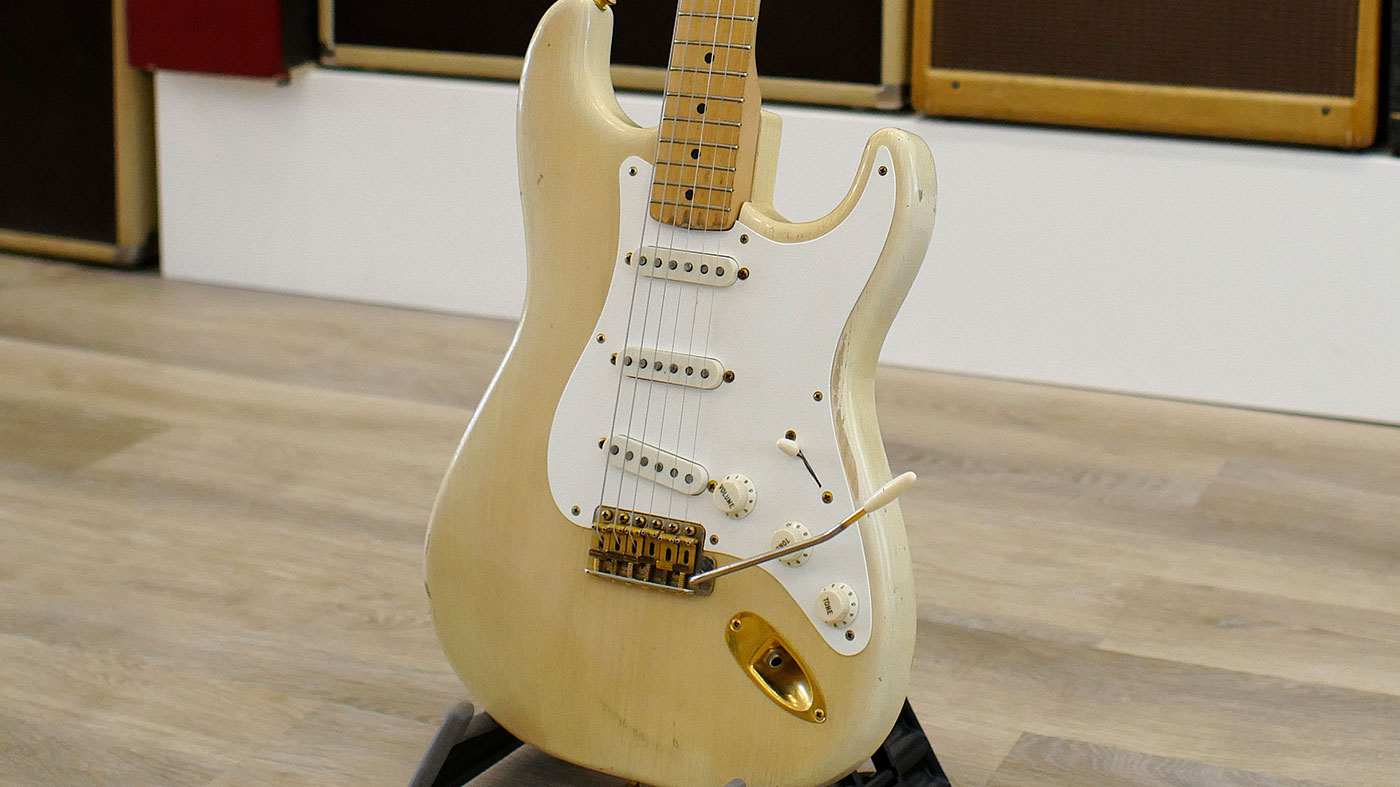
Paint it blonde
Although some variation is evident among blonde finishes of the early 50s, they are often characterised by a distinctive yellow tint that is often described as ‘butterscotch’. In 1954, however, when Fender began using automotive-industry paint, this changed to a markedly lighter shade. “They used DuPont Duco colours - the same as was used on cars,” Mike says. This shift to a more UV light-resistant formula inhibited the degradation of pigment and the discolouration associated with ageing, with knock-on effects on the guitar’s look.
The original guitars we call ‘butterscotch’, weren’t necessarily that colour when they were new
“I believe UV inhibiters started to get into the finishes,” continues Ron, “both in the automotive industry [paint] and the clearcoat - anything that started to yellow when it was presented to sunlight. They started to put these UV inhibiters in the colour and the clear top-coat to prevent it from changing, and I think that affected [the appearance of ] guitars over the years. I suspect the type of clearcoat changed back and forth every couple of months, depending on what was available and maybe what was the cheapest.”

“The original guitars we call ‘butterscotch’, weren’t necessarily that colour when they were new,” explains Mike. “I think the actual composition of the finishing materials changed and so they didn’t yellow quite as much. I’ve seen some a lot more butterscotch-coloured than others. There’re always inconsistencies in the colours, and who’s to know for sure if they changed the formula, or what got changed and why? But I do know Fender listened very carefully to customers.
“As far as why it went from ‘butterscotch’ to a much whiter blonde - it could have easily been that people requested it. Or, after a period of time, maybe they got too yellow and people complained about it. The thing to remember is, back in the day, when it was all new, there wasn’t all this history of, ‘it’s supposed to be this way’. Y’know, they were inventing it as they went along. The method of manufacturing these guitars had never existed before. This was part of the genius of Leo Fender - not only did he innovate the electric guitar and create these solidbody designs, but, more importantly, he created a method of manufacture so that it could be repeated. He was constantly tweaking and improving.
“As time went on, the demand was growing for the guitars and they had to make more. They didn’t want to sacrifice any quality, but were constantly figuring out how they were going to make more, and still make them great. So, they were always tweaking the process.”

People power
A great deal of that process lay in the hands of Fender’s craftspeople, with each imparting their own unique personal touches to every guitar that left the factory, as Fender Custom Shop Painter, Jay Nelson, points out: “There are slight variations.” Indeed, this can be particularly noticeable when it comes to blonde finishes.
In 1956, the official body wood changed from ash to alder, but whenever you ordered a guitar in blonde you still got ash
“I always wondered how many painters they had back then, because when I look at some of those old ’bursts - the red on some of them is wider, or a little bit wider on this side than that side, and the next one you’ll see (from the same year) is narrower. You think there’s got to be different people doing this! And that applies to blondes too. Any blonde. If you’re spraying it, the more you apply, the less transparent it is. So, one person might be putting on one more coat than the other person, and they’re still blonde and transparent, but maybe one’s slightly different.”
“Not only was it dependent upon the individual painter, but also the individual [ash] body,” adds Ron. “Especially on the blondes, the finish can have a slightly darker perimeter edge where it’s almost a little ’burst lipping over. I think that might have been dependent on how obvious the glue line or seam was between the pieces of the body. The painter may have put a little extra around the edge to mask that and make it a little less obvious. I think that’s why you sometimes see a subtle ’burst on the outside edge of blondes. The edges are typically a little bit opaquer.”
Blonde Fenders not only look unique, but they sound unique too - a factor determined indirectly by the finish itself.
“In 1956, the official body wood changed from ash to alder, but whenever you ordered a guitar in blonde you still got ash,” clarifies Mike. “Blonde was a transparent colour; you can see the grain and it just looks a heck of a lot better over ash than it does on alder. If you’re sitting in your house playing at low volume you might like ash better, because it has more of a full-range sound. You get more lows, a softer, sweeter midrange and the highs are kind of tinkly. Whereas alder has a little bit more midrange. It might seem to be more one dimensional in that type of setting, but when you get on stage and the drummer’s playing you might hear the alder better - it might cut through better because it has more midrange. That’s what I hear. I like them both, but it just depends on what you’re doing with it.”
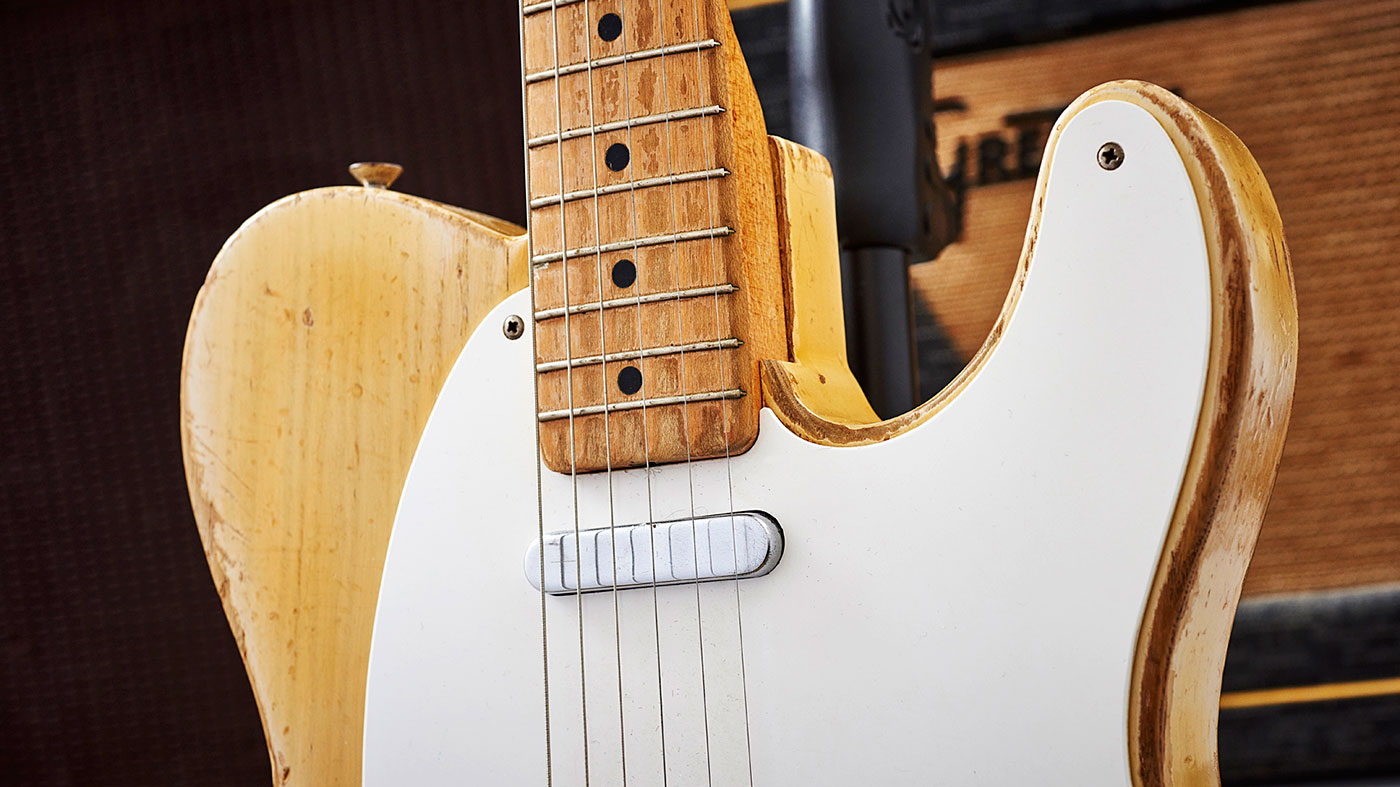
Nitro
Over time, the sound of a typical blonde vintage Fender is also liable to change to some extent, as the natural ageing process of the nitrocellulose finish and the ash body progresses.
“As the nitrocellulose finish ‘gases off’ and the solvents evaporate, and the finish starts to sink into the wood, it allows for a little more climate change and the relative humidity to affect the moisture content in the wood,” explains Ron. “As it dries out, the remaining moisture in the wood can decrease. If there was any moisture remaining in the wood, then that would probably have dried out a little bit more and the resins in the wood may have crystallised and hardened.”
“It’s the difference between wearing a rubber jacket and a cotton jacket!” says Mike, highlighting the difference between this scenario and the later poly finishes employed during Fender’s CBS era. “Man, we hardly ever use poly in the Custom Shop,” confirms Jay. “We use it, maybe, on some of the sparkle-finish bodies, but other than that it’s such a rare thing to spray nowadays.”
Blonde remained the standard finish on both Telecasters and Esquires during Leo’s entire tenure at Fender and was simultaneously offered as a custom colour option for Stratocasters, Jazzmasters and Jaguars, although the method of painting the bodies remained indistinguishable.
“They might look different with time, but as far as the way they’re finished, it’s the same exact way - it’s the same undercoat and the same materials,” says Jay. “Back then, whoever was painting and whatever they got, they would just paint them. The paint goes on the same way!” As it still does in the Fender Custom Shop to this day.
Rod Brakes is a music journalist with an expertise in guitars. Having spent many years at the coalface as a guitar dealer and tech, Rod's more recent work as a writer covering artists, industry pros and gear includes contributions for leading publications and websites such as Guitarist, Total Guitar, Guitar World, Guitar Player and MusicRadar in addition to specialist music books, blogs and social media. He is also a lifelong musician.
“These guitars travel around the world and they need to be road ready”: Jackson gives Misha Mansoor’s Juggernaut a new lick of paint, an ebony fingerboard and upgrades to stainless steel frets in signature model refresh
“It’s about delivering the most in-demand mods straight from the factory”: Fender hot-rods itself as the Player II Modified Series rolls out the upgrades – and it got IDLES to demo them
